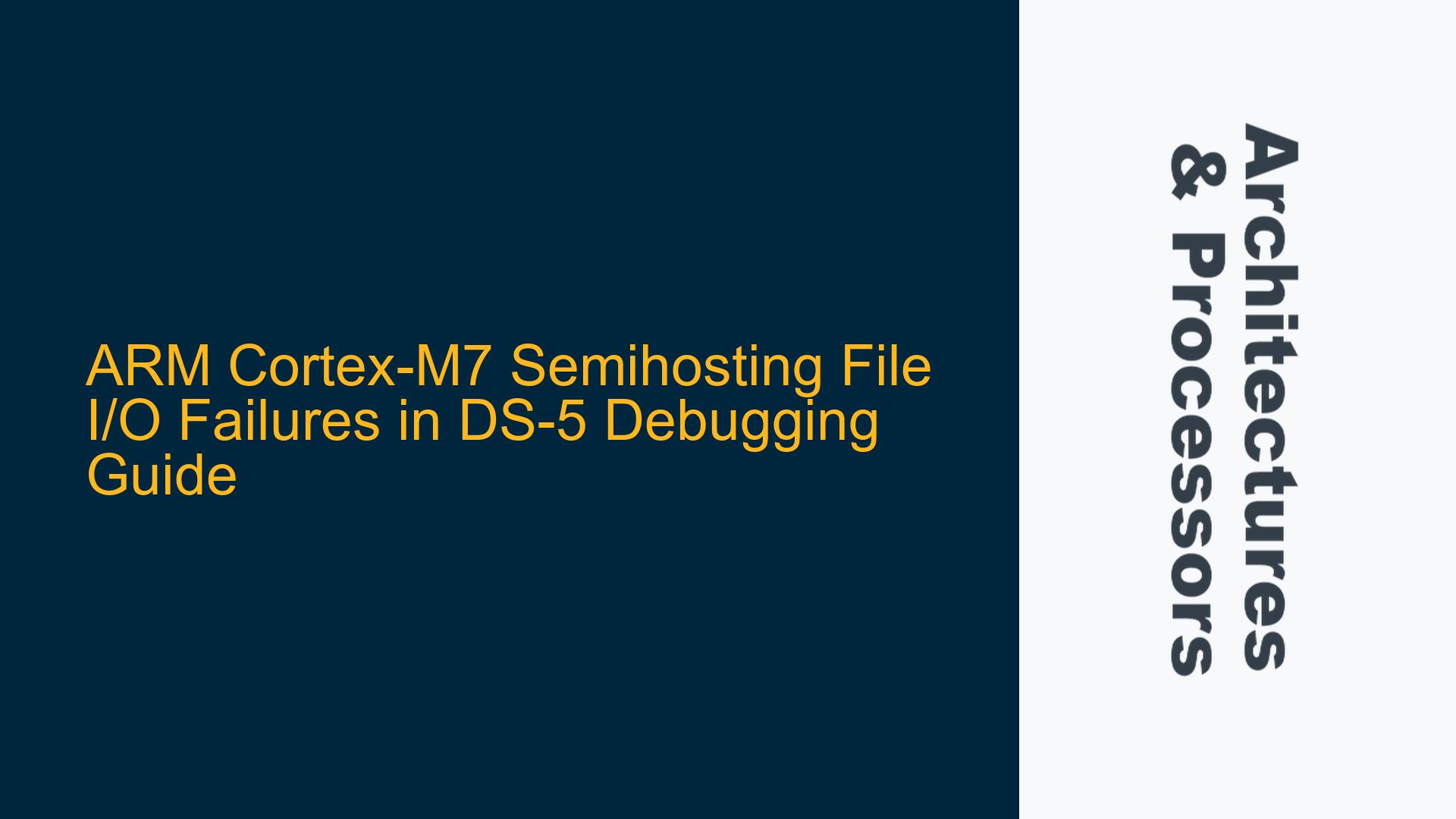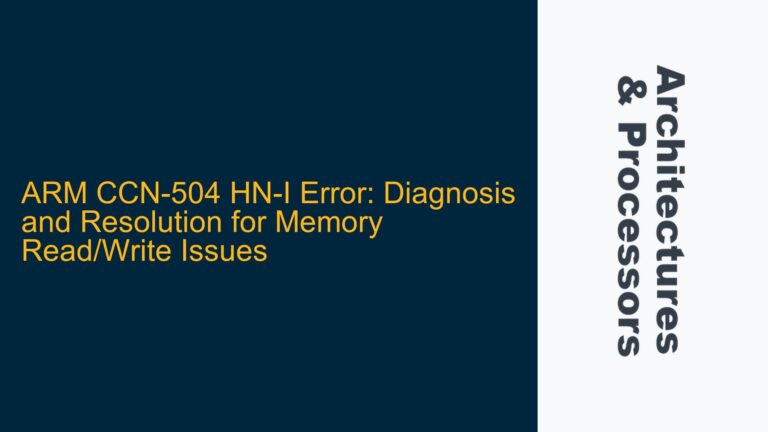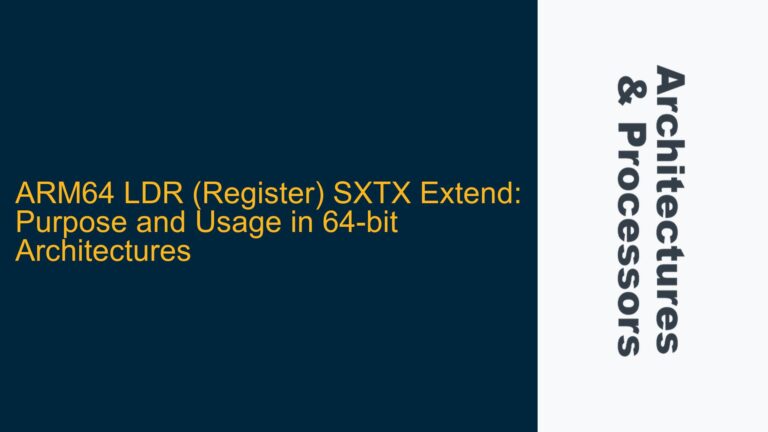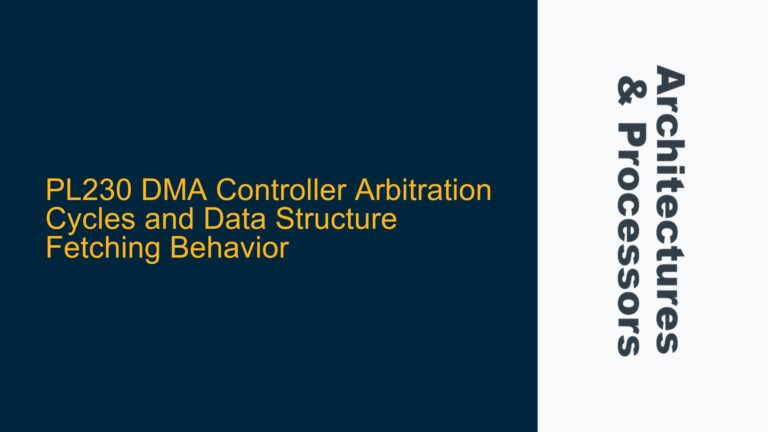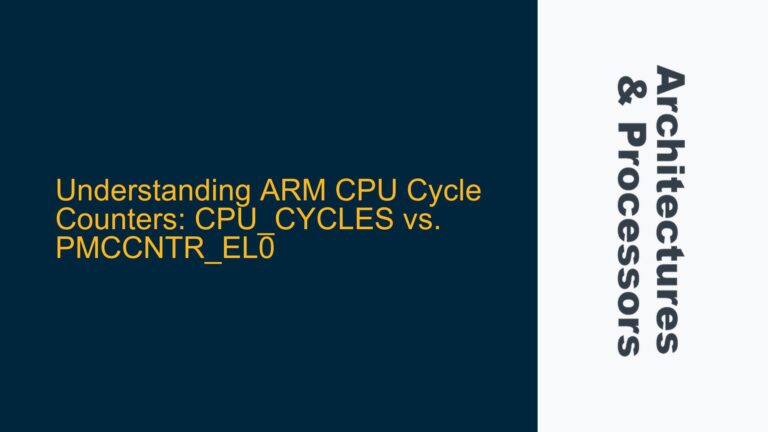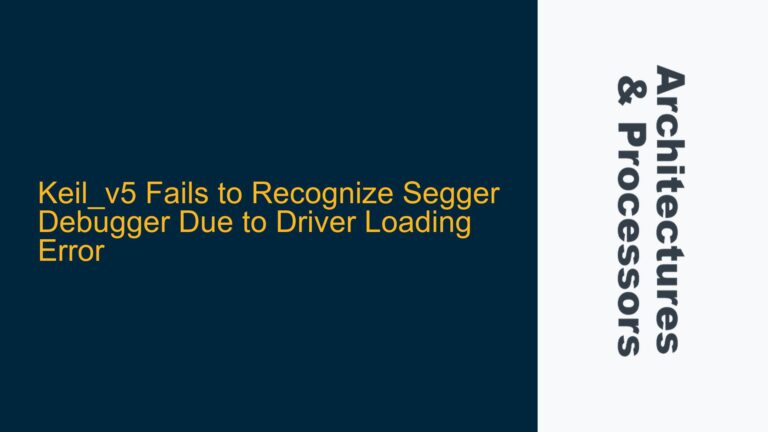ARM Cortex-M7 Semihosting File I/O Failures in DS-5
Semihosting is a mechanism that allows ARM-based embedded systems to communicate with a host computer for debugging and development purposes. It enables the target device to use the host’s resources, such as file I/O, console input/output, and other system services. However, when implementing semihosting on an ARM Cortex-M7 target using ARM DS-5 (Development Studio 5), developers may encounter issues where file I/O operations, such as fopen, fail and return error codes like -1. This issue can stem from a variety of causes, including misconfigurations, target-specific limitations, or improper semihosting setup. Below, we will explore the root causes of this problem and provide detailed troubleshooting steps to resolve it.
Misconfigured Semihosting Setup and Target-Specific Limitations
The ARM Cortex-M7 processor, while powerful, has specific requirements and limitations when it comes to semihosting. Semihosting relies on the ARM Debug Interface (ADI) and requires proper configuration of the debugger, target, and host environment. A common cause of semihosting failures is an incomplete or incorrect setup, which can manifest as file I/O errors. Additionally, the target platform, such as the FVP MPS2 AC5 (Fixed Virtual Platform for Cortex-M7), may impose constraints on semihosting functionality due to its virtualized nature.
One of the primary challenges with semihosting on the Cortex-M7 is ensuring that the debugger and target are correctly synchronized. The Cortex-M7’s high-performance capabilities, including its caches and memory system, can introduce timing issues that affect semihosting operations. For example, if the debugger does not properly handle cache coherency or memory barriers, semihosting calls may fail silently or return incorrect results.
Another potential cause is the evaluation version of DS-5. While the evaluation version does not explicitly restrict semihosting functionality, it may lack certain features or optimizations present in the full version. This can lead to unexpected behavior, especially when dealing with complex operations like file I/O. Furthermore, the FVP MPS2 AC5, being a virtual platform, may not fully emulate all hardware behaviors required for semihosting, leading to discrepancies between the virtual and physical environments.
Debugger-Target Synchronization and Cache Coherency Issues
The ARM Cortex-M7’s cache architecture can significantly impact semihosting operations. The Cortex-M7 features both instruction and data caches, which are designed to improve performance by reducing memory access latency. However, these caches can introduce coherency issues when semihosting is involved. Semihosting operations require direct access to memory, and if the debugger does not properly invalidate or clean the caches before performing semihosting calls, the results may be inconsistent or incorrect.
For example, when a semihosting call such as fopen is made, the debugger must ensure that any cached data related to the file operation is flushed to memory. If the cache is not properly managed, the debugger may read stale data or fail to write new data, leading to errors. This is particularly problematic in the FVP MPS2 AC5, where the virtualized memory system may not fully replicate the behavior of physical hardware.
Additionally, the timing of semihosting operations can be affected by the Cortex-M7’s pipeline and out-of-order execution capabilities. If the debugger does not account for these factors, semihosting calls may be executed prematurely or delayed, resulting in failures. Proper use of memory barriers and synchronization primitives is essential to ensure that semihosting operations are performed at the correct point in the program’s execution.
Resolving Semihosting Failures: Debugger Configuration and Cache Management
To resolve semihosting failures on the ARM Cortex-M7 using DS-5, developers must address both the debugger configuration and cache management. The following steps provide a comprehensive approach to troubleshooting and fixing these issues:
Debugger Configuration
Ensure that the debugger is properly configured to support semihosting. In DS-5, this involves enabling semihosting in the debug configuration settings. Navigate to the debug configuration menu, select the appropriate target, and verify that the "Enable Semihosting" option is checked. Additionally, ensure that the debugger is using the correct target interface, such as JTAG or SWD, and that the connection is stable.
Cache Management
Implement cache management strategies to ensure coherency during semihosting operations. Before making a semihosting call, use the __DSB() (Data Synchronization Barrier) and __ISB() (Instruction Synchronization Barrier) intrinsics to flush the pipeline and ensure that all previous memory operations are complete. Additionally, invalidate the relevant cache lines using the SCB_InvalidateDCache() function to prevent stale data from being used.
Target-Specific Adjustments
For virtual platforms like the FVP MPS2 AC5, consider adjusting the platform settings to better emulate semihosting behavior. This may involve modifying the memory map or enabling additional debugging features in the virtual platform configuration. If the issue persists, try running the code on a physical Cortex-M7 target to determine if the problem is specific to the virtual platform.
Error Handling and Debugging
Implement robust error handling to capture and diagnose semihosting failures. Use the errno variable to retrieve detailed error codes when semihosting calls fail. Additionally, enable verbose debugging output in DS-5 to gain insights into the debugger’s behavior during semihosting operations. This can help identify timing issues, cache coherency problems, or other anomalies.
Evaluation Version Limitations
If using the evaluation version of DS-5, consider upgrading to the full version to access additional features and optimizations that may improve semihosting performance. Alternatively, explore other debugging tools or semihosting implementations that may be more compatible with the evaluation version.
By following these steps, developers can effectively troubleshoot and resolve semihosting file I/O failures on the ARM Cortex-M7 using DS-5. Proper configuration, cache management, and target-specific adjustments are key to ensuring reliable semihosting operations in embedded systems development.
